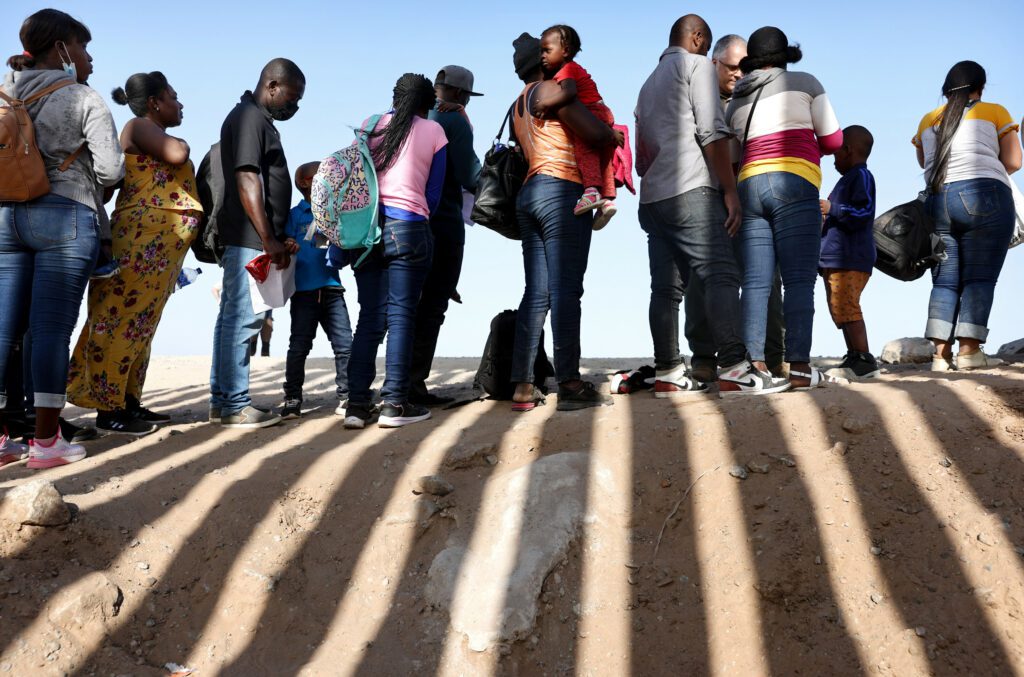One of the most talked about moments of the presidential debate this week was when former President Donald Trump referenced a dubious albeit widely-shared story about Haitian migrants in an Ohio town allegedly eating people’s pets. But the real story of Springfield, Ohio’s refugee crisis is not about cats and dogs. It is the story of a town still reeling from years of NAFTA-induced abandonment once again being forced to clean up a mess perpetuated by the federal government.
In 1983, this very publication named Springfield as one of America’s “Dream Cities.” It was a picture perfect example of Americana, with a thriving middle class and an enduring manufacturing base. But in the years since, Springfield has become one of many of America’s great towns to fall victim to deindustrialization and the decline of the middle class. Today, Springfield has a 22 percent poverty rate and a median income of just over $27,000 a year.
It is impossible for a fair observer to view Springfield residents’ resistance to the influx of Haitian refugees without understanding that context. This is a town full of people who are trying to survive, already reeling from devastating policies caused by the federal government. For Springfield, this is more of the same.
In 2014, local officials believed that one way to end Springfield’s population decline was to swing the doors open to immigrants, launching the “Welcome Springfield” initiative. It seemed like a good idea. After all, immigration does play an important role in population growth and it has been shown to help struggling cities when managed properly.
Springfield had little problem integrating and assimilating immigrants in the years after the launch of “Welcome Springfield.” So what happened now? Haiti descended into chaos and the Biden administration allowed in a flood of refugees, overwhelming the system in Springfield.
Immigrants from Haiti, who crossed through a gap in the U.S.-Mexico border barrier, wait in line to be processed by the U.S. Border Patrol on May 20, 2022 in Yuma, Arizona.
Immigrants from Haiti, who crossed through a gap in the U.S.-Mexico border barrier, wait in line to be processed by the U.S. Border Patrol on May 20, 2022 in Yuma, Arizona.
Mario Tama/Getty Images
Instead of working with the residents to gradually integrate Haitian refugees into a new country, the federal government, together with a host of immigration nonprofits, dropped 20,000 immigrants into a city of 60,000 in a little over three years time, while basically telling the residents to “figure it out.”
The influx of refugees is straining the social safety net, overwhelming medical centers and schools, and raising housing costs, as unscrupulous landlords take advantage of Haitians while displacing residents in a city that already had a 22 percent poverty rate.
Residents are frustrated with the lack of support and angry at the unnecessary chaos. As Setys Kelly, a Springfield area resident, told me, “Many of the homes have been condemned previously and now [the refugees] are living in them. They have no water sometimes, no sanitation system, no heat. They’ve been seen publicly nude in Buck Creek, bathing.”
She also explained how the influx is impacting the school system. “The school systems are overloaded. The first week of school we had 300 new Haitian students that had never attended school here before. Last year, they were getting about 40 new kids per week at the school system, and it was costing approximately $10,000 per student, per year, to educate them.” Many of these students can’t speak English, which causes issues between them and their teachers while also costing the district tens of thousands of dollars in new accommodations.
As this story has been thrust into the mainstream, it has now become a political issue. Outsiders who are disconnected from the realities on the ground in a place like Springfield, call them a bunch of racists for the resistance. The residents resent that. “Stop blaming us”, Setys said. “Stop blaming the people, calling us racists [and] hate mongers. We’re trying to survive.”
Considering the fact that the city of Springfield is roughly 20 percent Black and they had no problem welcoming immigrants before the recent influx, their anger can’t be just dismissed as racial animosity.
Ultimately, it is not a question of whether the U.S. should allow legitimate refugees running from legitimate danger in. Few rational people would oppose that. But you can be a welcoming country and still question the feasibility of dropping 20,000 people into an economically poor city of 60,000 in less than four years, while doing nothing to help the city take care of them.
This situation isn’t fair to anyone. Haitian refugees are being thrust into unnecessary conflicts with Springfield residents. Struggling residents are rightly resentful of refugees receiving more in assistance than what they qualify for as American citizens. The strain on the school system and hospitals is another point of contention. And the residents, who are barely getting by, feel frustrated and abandoned by the federal government. Again.
Darvio Morrow is CEO of the FCB Radio Network and co-host of The Outlaws Radio Show.
The views expressed in this article are the writer’s own.
Source link : http://www.bing.com/news/apiclick.aspx?ref=FexRss&aid=&tid=66e44eb0fc2f42959e2d9b15408f6c27&url=https%3A%2F%2Fwww.newsweek.com%2Fspringfield-migrants-are-taking-toll-citys-most-vulnerable-opinion-1953385&c=15839703162362600483&mkt=en-us
Author :
Publish date : 2024-09-13 01:31:00
Copyright for syndicated content belongs to the linked Source.
